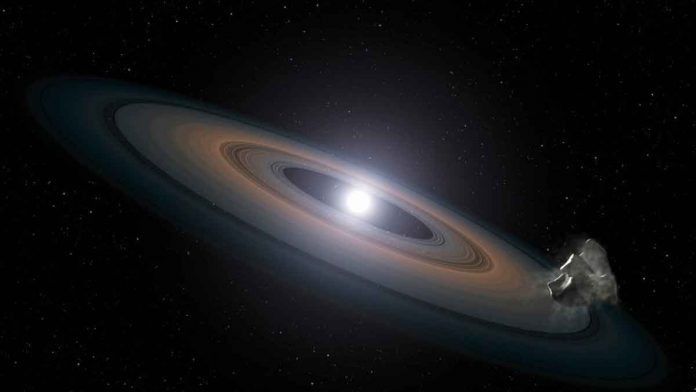White dwarfs were once normal stars similar to the sun. Then they collapsed after exhausting all their fuel. These interstellar remnants have historically been difficult to study. But Lund University in Sweden scientists reveal new information about the movement patterns of these puzzling stars.
White dwarfs have a radius of about 1 percent of the suns. They have about the same mass. It means they have an astonishing density of about 1 ton per cubic centimeter. White dwarfs will cool down to a point where they stop emitting visible light, after billions of years. They will then turn into so-called black dwarfs.
The first white dwarf that was discovered was 40 Eridani A. It is a bright celestial body 16.2 light-years from Earth. It was surrounded by a binary system consisting of the white dwarf 40 Eridani B and the red dwarf 40 Eridani C. It was discovered in 1783. Astronomers have tried to learn more about white dwarfs in order to gain a deeper understanding of the evolutionary history of our home galaxy. A new study was published in Monthly Notices of the Royal Astronomical Society. Scientists present new findings about how the collapsed stars move.

Researchers have measured positions and velocities for about 1.5 billion stars, because of Gaia. But now they were able to completely focus on the white dwarfs in the solar neighborhood.
The results can be used to develop new simulations and models to continue to map the history and development of the Milky Way. Scientists hope to be able to straighten out a number of question marks surrounding the birth of the Milky Way, through an increased knowledge of the white dwarfs.

